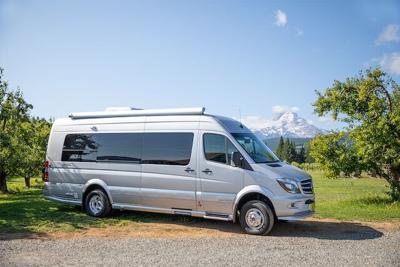
Among the masses of previously enjoyed vans and used cars in the UK sits the slight oddity of the car-derived van. While they are commercial vehicles with only two seats and a load area in the back, they’re not subject to the lower speed limits on national speed limit single carriageways and dual carriageways most vans are.
You’ll find many car-derived vans based on smaller models such as the Fiesta, estates, and some rugged 4x4s. You might be wondering why you’d go to the trouble of converting a car when outstanding vans exist, we’ll tell you why and what exactly a car-derived van is in this handy guide.
What is a car-derived van?
As the name suggests, it’s a car with its back seats and seatbelts removed, a flat floor installed, and rear windows blanked off and unable to be opened. The benefit is that they unsurprisingly drive just like a car and generally come with plenty of equipment, with the downside being a much smaller load bay and lower maximum payload than a purpose-built van.
So why bother?
Well, size or capability usually makes turning a car into a van a sensible
choice. Van versions of Ford Fiestas and Vauxhall Corsas make sense in a city if your deliveries are small, while converted 4x4s are perfect if you often find yourself in the middle of a field. So, can anything become a car-based van?
According to the 1984 Road Traffic Regulations Act, ‘car-derived van’ means ‘a goods vehicle that is adapted as a derivative of a passenger vehicle and which has a maximum laden weight not exceeding 2 tonnes.’
The critical thing to note here is that it’s the weight of the van fully loaded they’re looking at, which is why so many car-derived vans are on the smaller side. That doesn’t mean you won’t find anything larger than a Fiesta or a Jimny; Toyota offers a van based on the Corolla estate that’s larger and comes with frugal hybrid power. If you want to ensure your van is classed as car-derived, it’ll be on the V5C under body type.
Standard van rules apply if it doesn’t state it’s a CDV. Speed limits for car-derived vans and dual-purpose vehicles Car-derived vans and dual-purpose vehicles are the only light commercial vehicles allowed to travel at the same speed as cars on national speed limit sections of single and dual carriageways. Where they can travel at 60 and 70mph, respectively, a typical van can legally only do 50 and 60mph.
We’re unsure whether that additional ten mph will make you any more productive during a working day, but it’s nice to know you’ll be getting home quicker than your van-driving chums, assuming they’re sticking to the speed limit.
Although it should go without saying, these speed limits only apply where the signage supports it. If you’re on a smart motorway with gantries flashing 40mph, you don’t get a free pass to do 70mph in your car-derived van.



(0) comments
We welcome your comments
Log In
Post a comment as Guest
Keep it Clean. Please avoid obscene, vulgar, lewd, racist or sexually-oriented language.
PLEASE TURN OFF YOUR CAPS LOCK.
Don't Threaten. Threats of harming another person will not be tolerated.
Be Truthful. Don't knowingly lie about anyone or anything.
Be Nice. No racism, sexism or any sort of -ism that is degrading to another person.
Be Proactive. Use the 'Report' link on each comment to let us know of abusive posts.
Share with Us. We'd love to hear eyewitness accounts, the history behind an article.